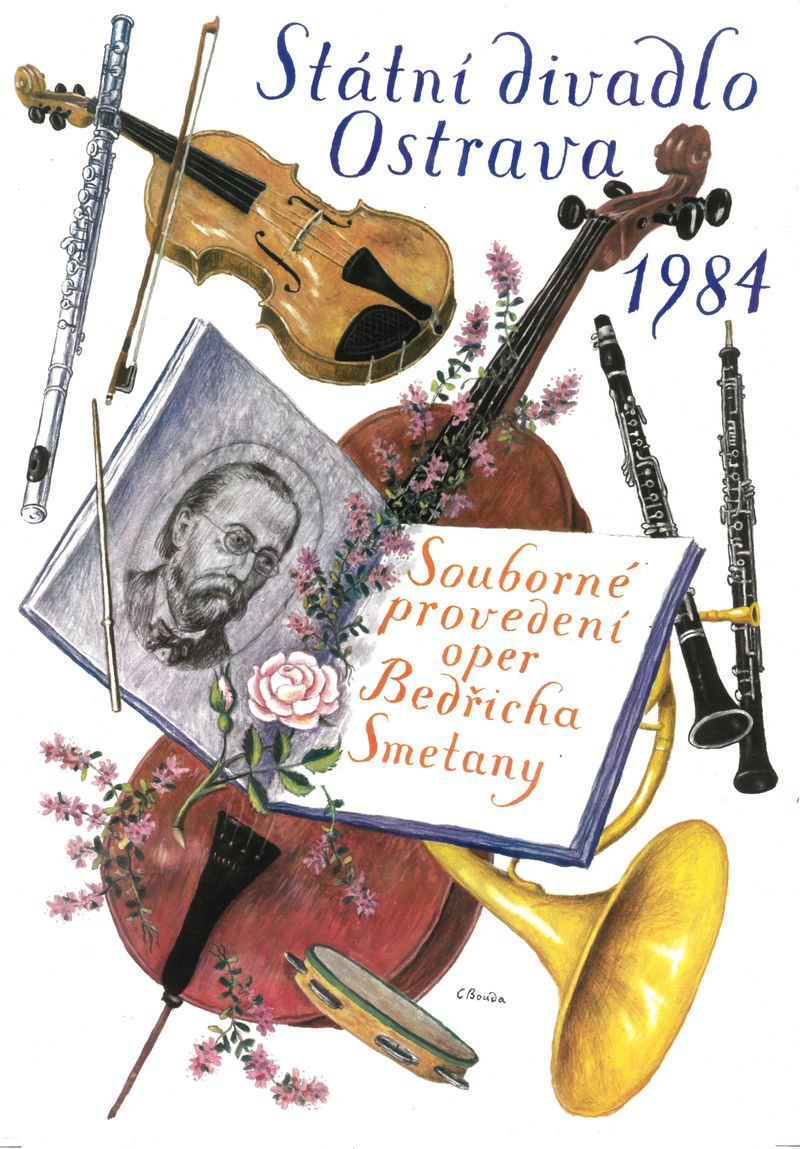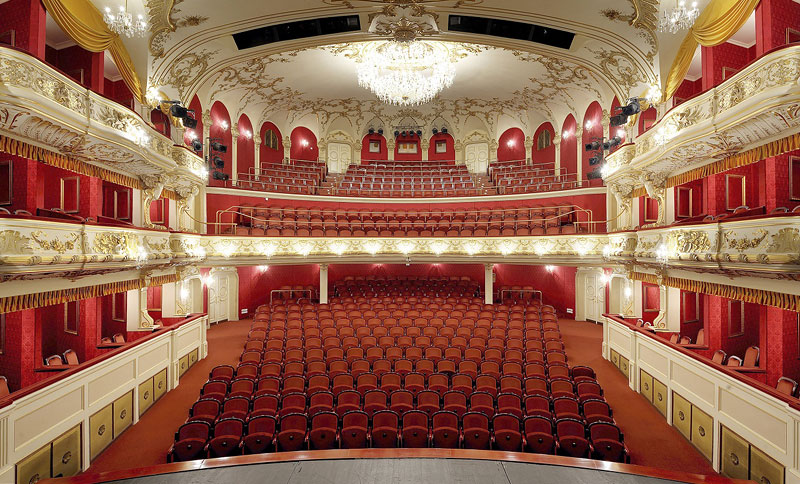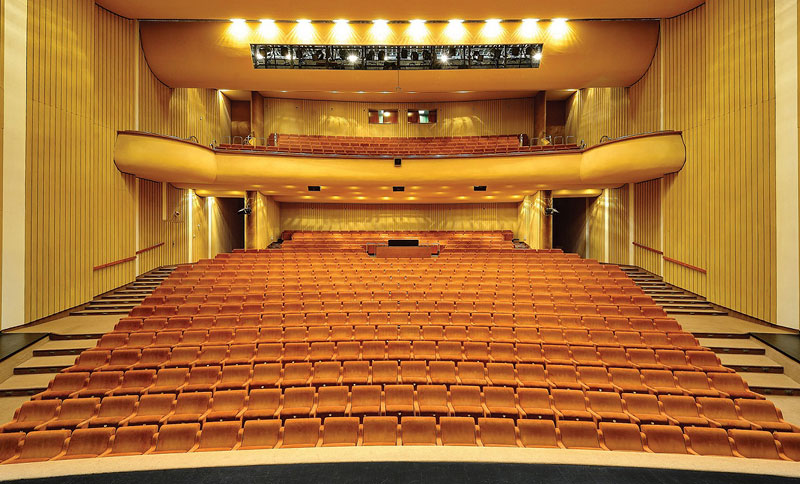All the things have turned out well: Looking Back at the Three Smetana Opera Cycles in The National Moravian-Silesian Theatre
Ostrava opera’s history dates back over a hundred years, and over that time it has already experienced the notional “marathon” of Smetana’s operas three times. For the fourth time, the musical celebration of Smetana’s remarkable operatic work will culminate in the 2023/2024 season.
The cycle of all of Smetana’s operas was presented for the first time in Ostrava in 1924. Back then, The National Moravian-Silesian Theatre had only been operating for five years. The year 1924 marked the 100th anniversary of the birth as well as the 40th anniversary of the death of the composer, so both of the anniversaries became a part of the cultural life of the entire republic. Smetana celebrations constituted displays of the nation’s gratitude toward the great composer. This gratitude was, to a certain extent, engendered by the atmosphere of the first post-war years of the independent republic. It was Emanuel Bastl, the first director of opera at The National Moravian-Silesian Theatre, who ensured the cycle would be presented in Ostrava. He was an outstanding artist who introduced the classics of Czech national music to the audience in Ostrava. He had an amazing opportunity to do so, as it was during his time as director (1919–1927) that the grand musical anniversary occurred. As part of the Smetana Cycle, he conducted all eight of Smetana’s operas in March to May of 1924, and then, due to exceptional success, again in June. He put on all eight of the composer’s operas: Libuše, The Brandenburgers in Bohemia, The Bartered Bride, Dalibor, The Two Widows, The Kiss, The Secret, The Devil’s Wall and the symphonic cycle Má vlast. No wonder he was awarded the gold Smetana medal for such a deed. He presented them in the order in which Smetana had composed them; Libuše, however, was an exception, as he put it at the beginning. The reason was symbolic and referenced the beginning of the Czech National Moravian-Silesian Theatre in Ostrava. It was because even before the first official season in the City Theatre a long-awaited event had taken place on 8 May 1919. Czech was heard on stage for the first time since the construction of the theatre in 1907! It happened in the City Theatre during Smetana’s Libuše under the baton of Emanuel Bastl.
For the second time, the Ostrava opera theatre presented all of Smetana’s operas more than three decades later in 1956. This happened thanks to the initiative and work of Rudolf Vašata, an outstanding conductor, and the excellent directorial lead by Ilja Hylas. They added new renditions to some of the already-presented works and the whole cycle was then concluded by Vašata during Ostrava’s May Festival. It ended with the premier of The Devil’s Wall and the first stage performance of a fragment from the opera Viola, which the composer never actually completed. The fragment of the opera Viola consists of only 365 bars, which equals around 14 minutes of music. So it was presented in Ostrava during a Smetana matinée together with Smetana’s orchestral composition of Prague Carnival and The Second Quartet in D Minor.
 The Smetana Cycle returned for the third time in 1984. As the only theatre located outside of Prague, the Ostrava opera had resolved to return to the idea of presenting Smetana’s work during The Year of Czech Music. At the initiative of Václav Návrat, the opera’s director, some of the older productions were renewed and later augmented with other titles – and the complete Cycle was presented from April to June of 1984. This time, however, culminating with the premier of Libuše and concluding with a private concert performance of Viola. Since the Smetana Cycle was not only a prestigious project but also one that was hard to organize, it required careful and continuous work. Rudolf Málek and Miroslav Nekvasil, the main opera directors of the then State Theatre of Ostrava, along with the conductor Jiří Pinkas, best ensured such careful and continuous work. An original artistic poster by the painter and illustrator Cyril Bouda and other printed materials for the programme also received a lot of attention at that time. As in 1956, other works by Smetana were added to the fragment of Viola – this time, it was the symphonic poem Richard III along with March to the Shakespeare Festival. The already difficult musical project was further complicated by the unenviable operating conditions. After the fire at Jiří Myron Theatre, the opera operated in cramped conditions – in one building together with three other ensembles. Not even this situation stopped the Ostrava opera from presenting the subsequent production of Libuše in Opava, Olomouc and Hukvaldy.
The Smetana Cycle returned for the third time in 1984. As the only theatre located outside of Prague, the Ostrava opera had resolved to return to the idea of presenting Smetana’s work during The Year of Czech Music. At the initiative of Václav Návrat, the opera’s director, some of the older productions were renewed and later augmented with other titles – and the complete Cycle was presented from April to June of 1984. This time, however, culminating with the premier of Libuše and concluding with a private concert performance of Viola. Since the Smetana Cycle was not only a prestigious project but also one that was hard to organize, it required careful and continuous work. Rudolf Málek and Miroslav Nekvasil, the main opera directors of the then State Theatre of Ostrava, along with the conductor Jiří Pinkas, best ensured such careful and continuous work. An original artistic poster by the painter and illustrator Cyril Bouda and other printed materials for the programme also received a lot of attention at that time. As in 1956, other works by Smetana were added to the fragment of Viola – this time, it was the symphonic poem Richard III along with March to the Shakespeare Festival. The already difficult musical project was further complicated by the unenviable operating conditions. After the fire at Jiří Myron Theatre, the opera operated in cramped conditions – in one building together with three other ensembles. Not even this situation stopped the Ostrava opera from presenting the subsequent production of Libuše in Opava, Olomouc and Hukvaldy.















